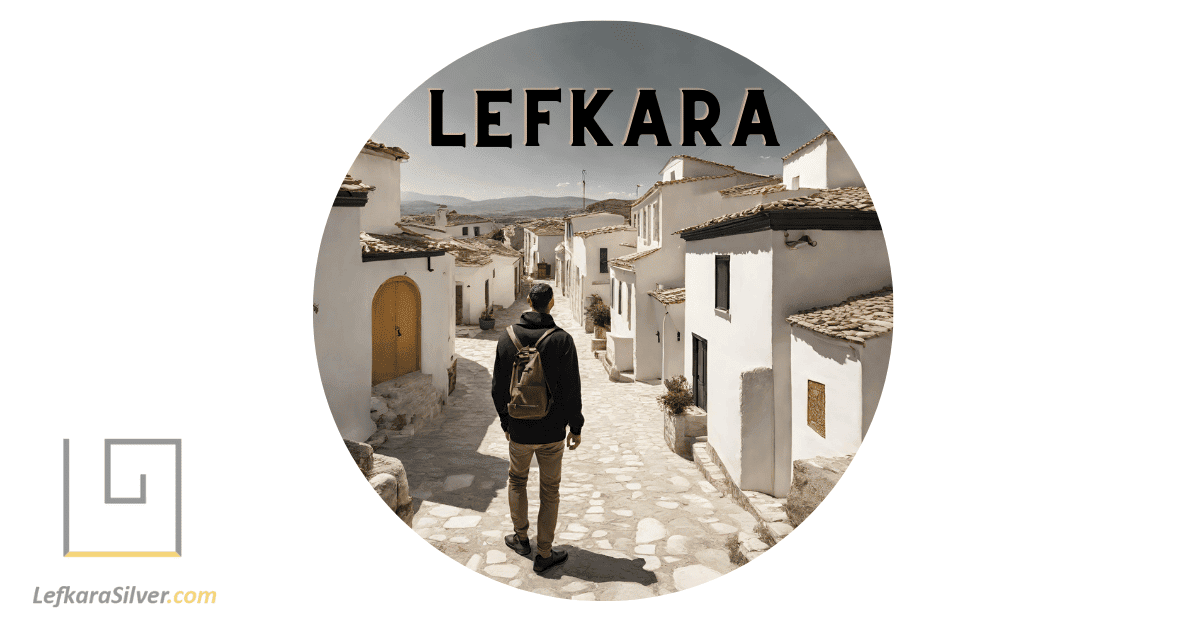News
Colorful Lefkara in 2024: Expert Tips on Top 10 Hotspots to Shop & Visit
Takeoff: Discovering Lefkara in 2024
Welcome to the vibrant world of Lefkara, a charming village nestled in Cyprus’s foothills of the Troodos Mountains. This article will explore its rich history, unique blend of tradition and artistry, and the best places to visit and shop in May 2024.
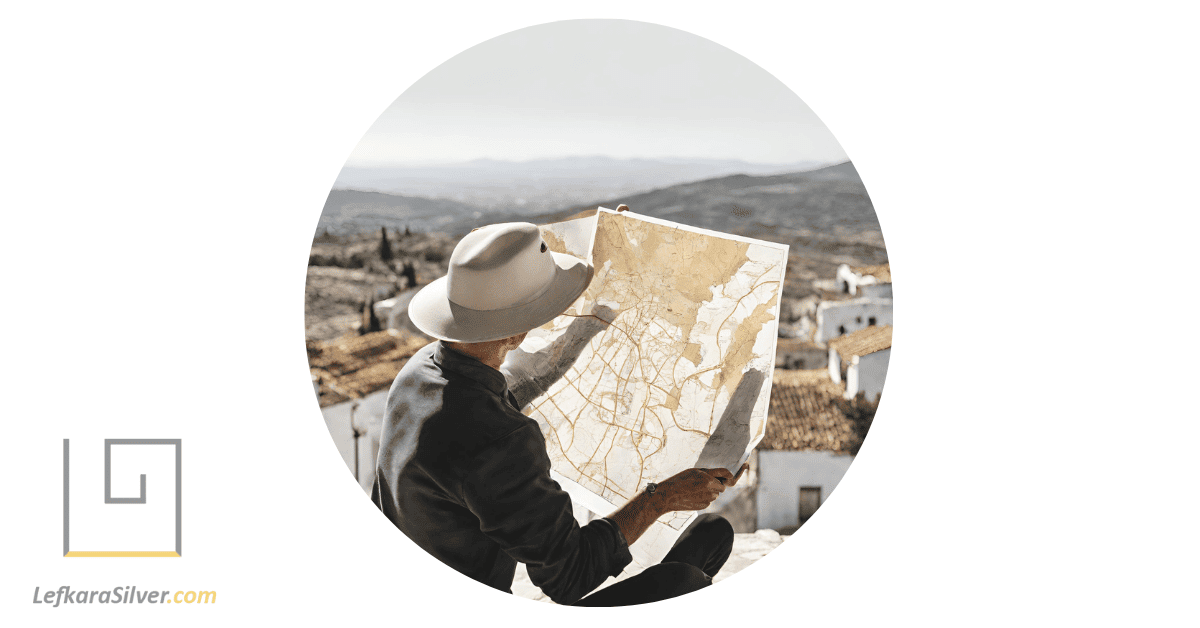
Top 10 Destinations: Where to Roam and Shop
1. The Lefkara Handicraft Centre: Located in the picturesque village of Lefkara, this center is renowned for its traditional handicrafts of lace embroidery and filigree silver. Visitors can learn about these crafts and watch them being made. It’s a great place to buy unique, handmade souvenirs.
2. The Museum of Traditional Embroidery and Silversmithing: This museum is housed in the ‘House of Patsalos’. It showcases traditional village life and an extensive collection of old Lefkara embroidery. It’s a must-visit for those interested in Cyprus’s rich cultural heritage. You can also virtually tour the Lefkara Museum.
3. The Church of the Holy Cross: This beautiful and ancient chapel is one of the exciting sites in Lefkara. It’s known for its frescoes, dating from the 12th and 15th centuries. A visit here offers a glimpse into the region’s religious history.
4. Ktima Dafermou Winery: Lefkara village is included as one of the island’s 7th Wine Route stops. It’s a great place to sample and buy local wines.
Ktima Dafermou is a contemporary establishment dedicated to preserving and enhancing the distinct qualities of meticulously handpicked grapes. It takes pride in being the pioneer winery specifically constructed in line with cutting-edge bioclimatic principles. Here, the time-honored craft of vinification seamlessly blends with the latest technological advancements.
5. Da Vinci Stone House: This holiday accommodation in Pano Lefkara offers a unique stay experience. It’s a great place to immerse oneself in the local culture and enjoy the picturesque surroundings.
6. Green Village Lefkara: Located in Pano Lefkara, Larnaca, Green Village Lefkara is a charming place that operates on Thursdays, Saturdays, and Sundays from 14:00 to 17:30. It offers a unique experience of the local culture and traditions. It’s a great place to immerse oneself in the local culture and enjoy the picturesque surroundings.
7. Michalakis Christou & Sons Handmade Silverware: Michalakis Christou & Sons Handmade Silverware is a family-run business in the heart of Lefkara, known for its genuine handmade silver filigree. Their products are of top shiny quality, made with the finest and most detailed threads of real silver.
8. L.Papaloizou-Cardiff Lefkara Lace Workshop & Silver: L.Papaloizou-Cardiff Lefkara Lace Workshop & Silver is a fantastic family business in Kato Lefkara. The shop is known for its beautiful filigree silver pieces and lacework.
9. Rouvis Lace and Silver: This shop, located in Pano Lefkara, Larnaca, Cyprus, offers silver and gold jewellery along with handmade “LEFKARITIKA” embroidery. It has received positive reviews for its fantastic family business.
10. Terra Oliva Organic Olive Farm: Nestled near Lefkara, Terra Oliva is an organic olive farm boasting over 7000 trees. Established in 2001, it combines traditional practices with modern technologies to produce high-quality Extra Virgin olive oil and other olive products. Visitors can learn about olive cultivation and enjoy tasting sessions.
Expert Advice: Fear not if your travels do not bring you to Lefkara. You can still experience the exceptional silver jewelry offerings of the region. We highly recommend Lefkara Silver, a distinguished online boutique. They specialize in creating handcrafted silver filigree jewelry, each piece a testament to the authenticity and exquisite craftsmanship of Lefkara silver. Explore their collection and discover the elegance of genuine Lefkara silver.
Lefkara Village: A Journey into the Heart of Tradition
The Village, located in Cyprus’s Larnaca region, is where tradition and artistry intertwine. The village is renowned for its Cypriot folk needlecraft art, known as the “lefkaritiko.” This intricate lacework has gained recognition beyond Cyprus’s borders and is known in many European countries.
The village owes its prosperity to this needlecraft art and its trade, which began in the late 19th century and flourished during the first thirty years of the 20th century. The village is situated at the foot of the Troodos Mountains, 650m above sea level, 45 km from Nicosia, and 30 km from the Larnaca airport. Despite its proximity to the sea, it is high enough for the moist air from the sea to dry when it reaches the village.
The village is also known for its beautiful architecture, with houses built almost entirely of local white stone, contrasting beautifully with the terra cotta roofs. The narrow, cobbled streets are a common sight, with groups of women sitting and working on their delicate embroidery, a tradition that has been carried on for centuries. The village is also home to skilled silversmiths who produce fine filigree work. To better appreciate the beauty of filigree craftsmanship, look at Cypriot Filigree History.
Combining these elements gives the Village its unique character and charm, making it a must-visit destination for anyone interested in art, history, and culture.
Pano Lefkara: The Upper Echelon
Pano Lefkara, or Upper Lefkara, is a picturesque village in the Troödos Mountains of Cyprus1. It’s renowned for its traditional “lefkaritiko” lace and silver handicrafts. The village’s name, derived from the Greek words “lefka” (white) and “ori” (mountains, hills), reflects the stunning white silica and limestone that characterize its landscape.
The village is characterized by its countless cobbled lanes and traditional stone cottages. Groups of women engaged in the centuries-old tradition of delicate embroidery are a common sight. The village is also home to skilled silversmiths who produce exquisite filigree work.
A Gastronomic Adventure in Tasties, Pano, Lefkara.
Pano Lefkara is not just about the lace or silver; it’s also a gastronomic paradise. One of the must-visit places is the Tasties Cafe. With a score of 92 based on 411 user ratings, Tasties Cafe offers a unique culinary experience. The cafe, located at Timiou Stavrou 38, Pano Lefkara, Cyprus, is known for its delicious dishes and excellent service. It’s a place to enjoy a good meal while soaking in the local culture.
Pano is not just a place; it’s an experience. From its rich history to its vibrant present, the village offers a unique blend of tradition and innovation that captivates visitors worldwide.
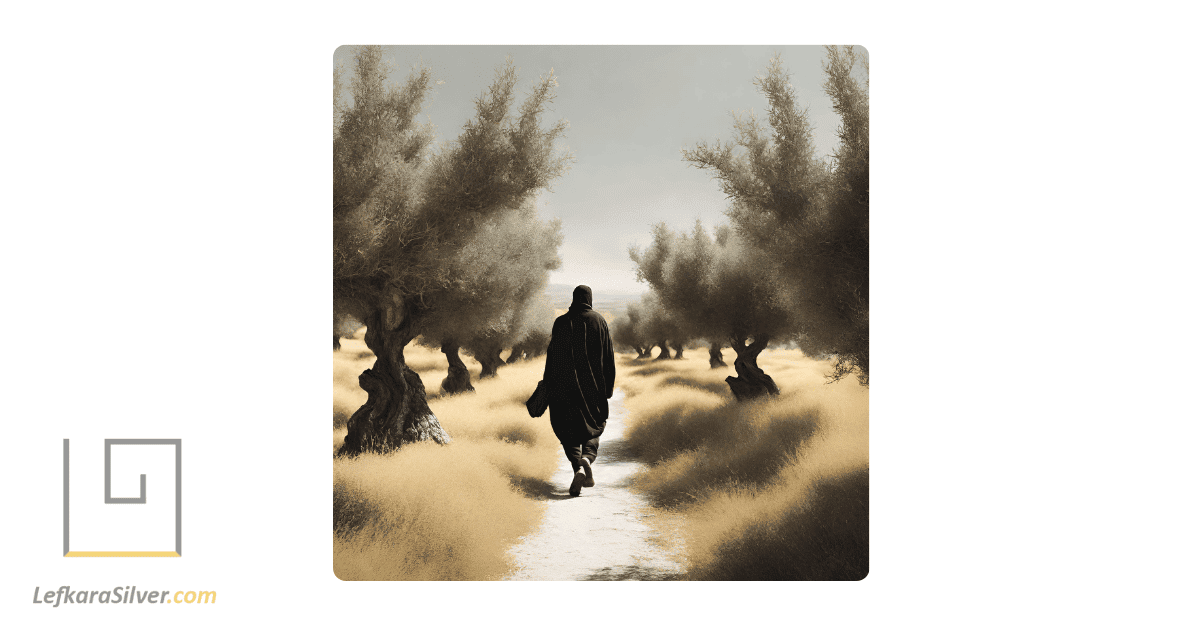
Kato Lefkara: Unearthing the Lesser-Known
Kato Lefkara, or Lower Lefkara, is a part of the Larnaca district and is located about 34 kilometers southwest of the city of Larnaca. The community is built at an average altitude of 480 meters. The terrain is hilly, and the altitude in the northeast of the settlement reaches up to 417 meters.
The landscape is fragmented by the rivers Syrkatis and Argaki, and St. Minas, all tributaries of the Pentaschoinos River. In the village’s limited cultivable land, vines (of wine-making varieties), olive, almond, and carob trees, a few citrus trees, forage plants, broad beans, a few fruit trees (fig, pomegranate, and plum trees), and very few vegetables are cultivated.
One of the significant aspects is the art of needlework (embroidery) that has reached a very high level of mastery. Embroideries here are available in a very large variety and are manufactured locally. What characterizes them is the affluence and the diversity of design.
Kato Lefkara is connected to the neighboring village of Pano (Upper) Lefkara in the northwest (about 1 km), with the village Kato Drys in the southwest (about 4 km.), and with the Skarinou Station in the southeast via the Nicosia – Limassol Highway (about 8 km).
The village’s greatest part is uncultivated and wild, natural vegetation grows in it, mainly pine-trees, thorny burnets and brooms, sages (cistus), thyme, and wild carob and olive trees. This natural beauty, combined with its rich cultural heritage, makes Kato Lefkara a significant and exciting place to visit.
| Location | Altitude | Distance from Larnaca | Notable Features |
|---|---|---|---|
| Lefkara Village | 650m | 30km | Famous for Cypriot folk needlecraft art |
| Pano | – | – | Famous for “lefkaritiko” lace and silver handicrafts |
| Kato | 480m | 34km | Known for its hilly terrain and agricultural land |
Lefkara’s Silver: The Shining Star of Craftsmanship
Lefkara, a picturesque village located at the foot of the Troodos Mountains in the southeastern region of Cyprus, is renowned for its exquisite silver craftsmanship. The village’s prosperity has been attributed mainly to this art form, which has gained recognition far beyond Cyprus’s borders.
The silversmith’s craft is believed to have emerged in the early 18th century. The village is home to skilled artisans who produce fine filigree work. These craftsmen create various items, including rings, spoons, church utensils, candles, cherubim, crosses, and religious icons. Each piece is a testament to the village’s rich cultural heritage and the remarkable skills of its artisans.
Lefkara’s silver jewelry is unique for several reasons:
- Historical Significance: The tradition of silver craftsmanship in Lefkara dates back to the 18th century, making each piece a part of a long-standing cultural heritage.
- Intricate Filigree Work: Lefkara silver is known for its fine filigree work, a delicate kind of metalwork that requires a high level of skill and precision. This gives each piece a unique, intricate design that is hard to replicate.
- Handcrafted: Each piece of Lefkara silver jewelry is handcrafted by skilled artisans, adding a personal touch that mass-produced jewelry lacks.
- Variety of Designs: From rings and spoons to religious icons, Lefkara silver jewelry has various designs, each with its unique story and symbolism.
- Cultural Symbol: Their jewelry is not just an accessory, it’s a symbol of the rich cultural heritage of Lefkara and Cyprus.
The Art of Lefkara Laces: A Tradition Preserved
Another craft that has put Lefkara on the global map is its traditional lace embroidery, known as “lefkaritiko”. This intricate needlework art form was born in Lefkara and has since become known in most European countries.
The late 19th century marked a significant period for Lefkara, as local women discovered that embroidery could be a lucrative source of wealth. This realization led to a considerable boost in the development of embroidery, making it a serious economic source for each family in the village. The “lefkaritiko” lace embroidery peaked as a work of art during the 1920s and 1930s.
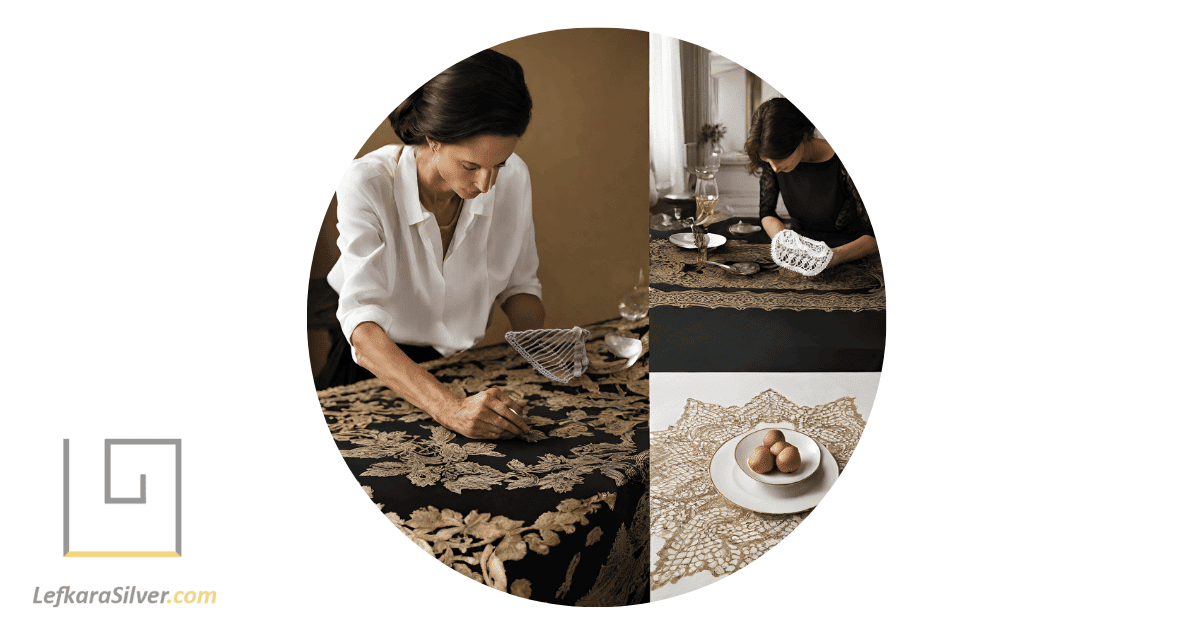
Lefkara Lace Tablecloth: A Symbol of Elegance and Craftsmanship
The Lefkara Lace Tablecloth is a symbol of elegance and craftsmanship. It is said that Leonardo da Vinci himself visited the village in 1481 and purchased a lace cloth for the main altar of the Duomo di Milano. This anecdote underscores the high regard for Lefkara lacework, which is considered among the best artwork in the world.
In 1889, a local lace school was opened in Pano, further cementing the village’s reputation for producing exquisite lacework. Today, the tradition continues, with local women often seen in the narrow village streets, working on their fine embroidery.
Comparison of Lefkara Crafts
| Craft | Origin | Recognition | Notable Period | Notable Work |
|---|---|---|---|---|
| Silver | Early 18th Century | Known for fine filigree work | Mid-20th Century | Wide variety of items including rings, spoons, church utensils |
| Lace | Late 19th Century | Known in most European countries | 1920s and 1930s | Lefkara Lace Tablecloth |
The Story Behind Every Lefkara Lace Dress
Each Lefkara lace dress tells a story of tradition and craftsmanship. The lace is made by hand, combining four basic elements: the hemstitch, cut work, satin stitch fillings, and needlepoint edgings.
– Length Of Time To Make: Creating a Lefkara lace dress requires significant time and skill. The time it takes to make a Lefkara lace dress can vary greatly depending on the design’s complexity and the artisan’s skill level.
For instance, embroidering a placemat in the pattern named for Da Vinci takes about three weeks, while a runner takes five weeks. A doily in that pattern takes about ten weeks to create, and a large tablecloth requires about a year. Therefore, given its size and intricacy, a lace dress could take several months to complete. This lengthy process contributes to the uniqueness and value of each piece.
– Cost To Make: The cost of a Lefkara lace dress can vary greatly depending on the complexity of the design and the amount of time it takes to create. On Etsy, prices for items related to Lefkara lace range from around $16 for small items like coasters to over $10,000 for large items like tablecloths.
Given its size and intricacy, a dress could potentially cost more. It’s also important to note that these are handcrafted items, and the price reflects the skill and time required to create each piece. As with any handmade item, the price can also be influenced by factors such as the artisan’s reputation and the materials’ quality.
This meticulous process results in beautiful, delicate, and complex designs, making every Lefkara lace dress a work of art.
Lefkara Lace Embroidery Book: A Guide to the Art
The book “Lefkara Lace Embroidery: Historical Development, Designs, Technique” by Androula Chatzēgiasemē and Androula Hadjiyiasemi is a comprehensive guide to the art of Lefkara lace. Published by Charalambos I. Philipides and Son in 1987, this book provides an in-depth look at the historical development, designs, and techniques of Lefkara lace.
The book is highly regarded as a thorough resource on Lefkara lace, although it is rare and difficult to find at an affordable price. It provides readers with an insight into the history of this beautiful embroidery technique and instructions through each stage, from preparing the cloth, cutting the threads, binding the edges of the cut areas, adding central fillings, working a variety of fillings, working the embroidered parts of the linen, working the hemstitched edges, and working the decorative edges of the finished piece.
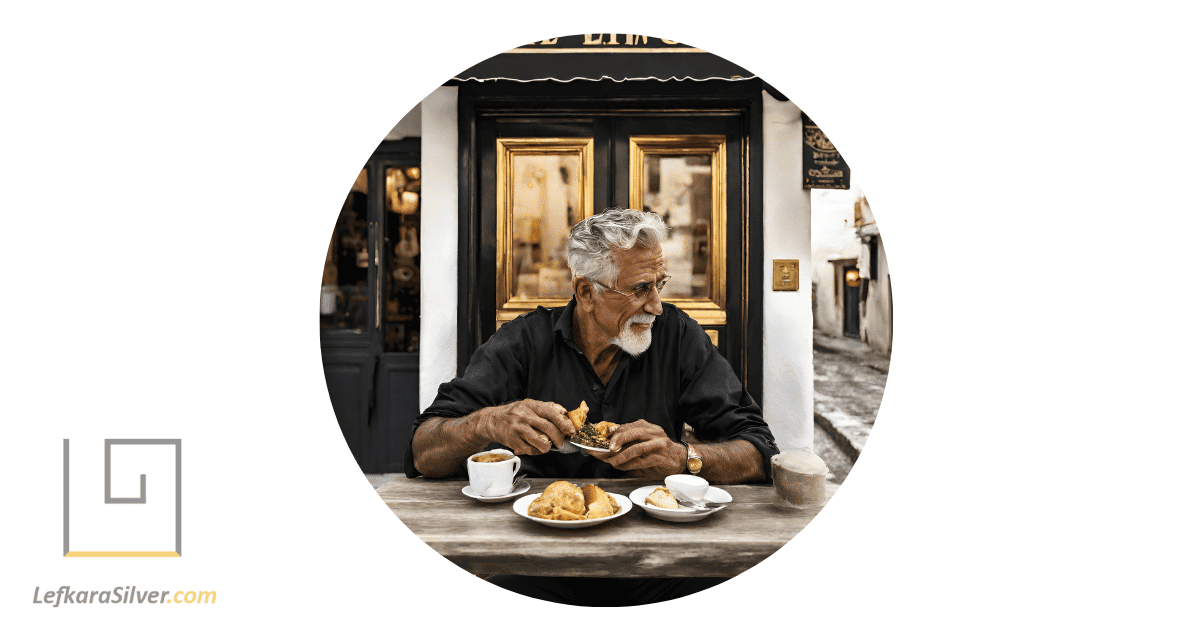
Lefkara Tourism: Why It’s a 2024 Hotspot
Lefkara is becoming a popular tourist destination. Known for its traditional lace embroidery and filigree silver handicrafts, it offers a unique blend of history, culture, and natural beauty. The village is split into Pano and Kato (higher and lower Lefkara), each offering a unique charm.
In 2024, Lefkara was awarded the status of ‘Best Tourism Village’ by the United Nations World Tourism Organisation (UNWTO). This recognition is a testament to Lefkara’s commitment to sustainable tourism practices and its preservation of traditional customs, handicrafts, architecture, and local gastronomy.
Visitors can enjoy various activities, from strolling the narrow stone-paved streets of the village, enjoying nature walks, visiting medieval convents and monasteries, and sampling traditional Cyprus dishes. Shopping enthusiasts can also purchase Lefkara lace, hand-made silver artifacts, locally produced Turkish delights, and local honey and almond preserves.
| Tourist Activity | Description |
|---|---|
| Strolling the Village | Enjoy the narrow stone-paved streets and old stone-built houses |
| Nature Walks | Explore the beautiful unspoiled countryside |
| Visiting Historical Sites | Visit medieval convents, monasteries, and old churches |
| Sampling Local Cuisine | Try traditional Cyprus dishes and local delicacies |
| Shopping | Purchase Lefkara lace, hand-made silver artifacts, and local products |
Hotels in Lefkara, Cyprus: Where to Stay for the Ultimate Experience
Regarding accommodations, several options offer a unique and memorable experience.
The Agora Hotel
The Agora Hotel is an adults-only luxury boutique in Cyprus’s heart. It features an outdoor swimming pool, a fitness center, a restaurant, and a bar and has a rating of 4.0 based on 13 reviews. The hotel was first converted into a hotel in the early 1990s and operated until 2005. It was then abandoned until 2019 when Aleksander and Emilie discovered it.
Iosiphis Stonebuilt House
Iosiphis Stonebuilt House is another excellent option. This hotel is built according to local architecture, just 80 meters from the main square. It has an exceptional rating of 9.6 based on 190 reviews.
Archontiko Kiverniti
Archontiko Kiverniti provides mountain views and offers accommodations with a garden. It has an exceptional rating of 5.0 based on 4 reviews.
Da Vinci Stone House
Da Vinci Stone House is a charming accommodation option located in Pano. This holiday home offers a patio, a seating area, a flat-screen TV, a fully equipped kitchenette with a fridge, and a private bathroom with a shower and complimentary toiletries. The house also provides a terrace and a barbecue on site. For those who enjoy outdoor activities, hiking and fishing can be enjoyed within the vicinity of Da Vinci Stone House. It has an excellent rating of 4.7 based on 19 reviews.
There are even more great options for accommodations in Lefkara, Cyprus. Each hotel offers a unique experience, catering to different preferences and budgets.
Whether you prefer a luxury suite or a cozy stone-built house, you’ll find the perfect place to stay.
Wrapping Up: Your Adventure Awaits
Lefkara, Cyprus, is a destination that offers a rich blend of history, culture, and natural beauty. From the traditional handicrafts of lace embroidery and filigree silver to the picturesque mountainous village split into Pano and Kato, there’s something colorful about Lefkara.
Follow our website, LefkaraSilver.com, to stay informed about new jewelry offers, news, and buying guides. Your May 2024 adventure in Lefkara awaits!

Lefkara FAQs
Where Is Lefkara Located In Cyprus?
It is located in the Larnaca district of Cyprus. It’s 575 meters above sea level, southeast of the Troodos Mountain Range. The village is approximately 35 kilometers from Larnaca, 50 kilometers from Nicosia, and 55 kilometers from Limassol. It is built almost entirely of local white stone, which contrasts beautifully with the terra cotta roofs.
What Is The History Of Lefkara?
Lefkara has a rich history that dates back to at least the 14th century. The name Lefkara comes from the color of the surrounding limestone: “Lefka” means white in Greek, and “ori” means hills or mountains. The village was likely established and developed during the Arab raids between the 7th and 9th century A.D. During the occupation period by the Franks, Lefkara became the see of the Greek Orthodox Bishop of Limassol, Amathus, and Curium. Later, during the Venetian occupation (1489 – 1570 A.D.), the village was referred to as a summer resort for the Venetian nobles and their families.
What Is Lefkara Known For?
Lefkara is world-renowned for its traditional handicrafts of lace embroidery and filigree silver. The village is famous for being home to the traditional Cypriot embroidered lace, the well-known “lefkaritiko”. This lace has gained a reputation beyond the frontiers of Cyprus and has become known in most European countries. The village’s architecture is well known, with houses built almost entirely of local white stone.
What Is The Significance Of Lefkara Lace?
Lefkara lace, or “lefkaritiko”, is a handmade lace from Pano Lefkara, Cyprus. It is the finest example of what embroidery and folk art in Cyprus has to offer. The lace is made by hand in designs combining four basic elements: the hemstitch, cut work, satin stitch fillings, and needlepoint edgings. The lace is so finely wrought that it has been legendary for centuries. It is said that the famous Renaissance artist Leonardo da Vinci visited Cyprus at the end of the 16th century and bought a sizeable ornate tablecloth made of Lefkara lace, which today decorates the Duomo Cathedral in Milan.
How Is Lefkara Lace Made?
This lace is made by hand in designs combining four basic elements: the hemstitch, cut work, satin stitch fillings, and needlepoint edgings. The lace is influenced by indigenous craft, the embroidery of Venetian courtiers who ruled the country beginning in 1489, and ancient Greek and Byzantine geometric patterns. It is made from the local white cotton fabric produced in Cyprus. A combination of stitches and cuts is used. The different motifs for Lefkara Lace total more than 650.
What Are The Main Attractions In Lefkara?
Lefkara offers a variety of attractions for visitors. These include wandering the beautiful alleys of the tiny village, which reveals good examples of the area’s architecture. The village is also home to the “Lefkara Handicraft Centre” and the “Loukoumi Workshop.” The Holy Cross church and several other chapels in the village are worth visiting. The Church of the Transfiguration of the Saviour, situated at the top of the Sotira mountain, offers a panoramic view of the whole area, including the sea. Another attraction is the Museum of Traditional Embroidery and Silversmith, which showcases the village’s rich lace embroidery and silversmithing history.
What Is The Lefkara Embroidery Technique?
The Lefkara Embroidery Technique, also known as “Lefkaritiko,” is a traditional form of embroidery that originated in the village of Lefkara in Cyprus. This technique is renowned for its intricate geometric patterns. It is influenced by indigenous craft, the embroidery of Venetian courtiers who ruled the country beginning in 1489, and ancient Greek and Byzantine geometric patterns. The Lefkara embroidery is handmade and combines four basic elements: the hemstitch, cut work, satin stitch fillings, and needlepoint edgings. The embroidery tradition in Lefkara has evolved centuries back, with the women giving their creations a more local character via inspired designs.
What Are The Shopping Options In Lefkara?
The village is famous for its traditional handicrafts, particularly Lefkaritiko lace and filigree silverware. Visitors can explore numerous shops selling these locally crafted items, clothing, furniture, jewelry, lingerie, souvenirs, organic products, and traditional food. Additionally, some shops sell locally made glassware and food and drink items. The shopping experience in Lefkara is complemented by the opportunity to watch the lace and silver made at the Lefkara Handicraft Centre, the Museum of Traditional Embroidery and Silversmithing, and various workshops.
What Are The Outdoor Activities To Do In Lefkara?
Wandering the village’s beautiful alleys reveals good examples of the area’s architecture: houses built with horizontal layers of limestone interspersed with pebbles. The town is also known for its exquisite and ancient chapels, including the church of Timios Stavros and the chapel of Archangelos Michail. For nature lovers, the village is surrounded by blooming almond trees, offering a unique sight, especially during the spring. Other outdoor activities include safari jeep rides, hiking, cycling, horse riding, and fishing.
How Can One Reach Lefkara From Nicosia?
Lefkara is located in the Larnaka region, less than 50 km from the major cities of Nicosia. There is no direct public transportation from Nicosia to Lefkara. Therefore, the most convenient way to reach Lefkara from Nicosia is by private car or taxi. The village is situated at the foot of the Troodos Mountains in the southeastern region, 650 meters above sea level, 43 km from Larnaka, and can be reached by following the A5, A1, and E105 routes.
What Is The Lefkara Silver Festival?
The Lefkara Silver Festival is an annual event that takes place in the village of Lefkara. The festival includes the organization of cultural events, through which Lefkaritiko embroidery and silversmithing are displayed as traditional Lefkara arts. The festival also features music, dance, theatre, and handicraft exhibitions, with visitors warmly welcomed. The festival is an excellent opportunity for visitors to learn about the traditional crafts of Lefkara and enjoy the village’s cultural heritage.
What Are The Accommodation Options In Lefkara?
Options include luxurious spa resorts, hotels, romantic villas, self-catering apartments, and the increasingly popular small rural hotels or ‘agrotourismos.’ The estimated daily cost for travelers in Lefkara can vary depending on your preferences and travel style. Budget accommodation options range from €40-60 for a guesthouse or budget hotel. Mid-range options range from €70-100 for a comfortable hotel or traditional guesthouse. Luxury options start from €120 for high-end hotels or luxury villas.

